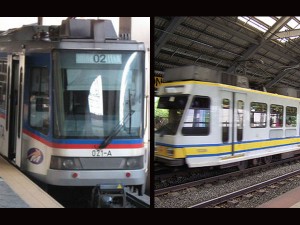
The government, in a tweet on its Official Gazette PH account, said free rides would be given to MRT-3, LRT-1 and LRT-2 commuters on Dec. 30 to celebrate Rizal Day. The free rides will run from 7 a.m. to 9 a.m. and 5 p.m. to 7 p.m., the tweet showed.
Both MRT-3 general manager Renato San Jose and Light Rail Transit Authority spokesman Hernando Cabrera confirmed this in a text message Monday.
“This is only for peak hours and will benefit those going to work,” Cabrera said. The year-end freebie comes days before a Jan. 4 rate hike, which would see the Department of Transportation and Communications implement a 2011 fare hike structure calling for a base fare of P11 plus P1 per every kilometer.
Transportation Secretary Joseph Abaya had said the move would increase “average fares for the average trip” by P6, still lower than bus fares traveling a comparable route.
The DOTC said this was aimed at cutting costly subsidies of P12 billion per year by about P2 billion. It said those savings would got to infrastructure and relief projects across the country. The decision was nevertheless criticized for being anti-commuter and unfair, given the current poor state of the railway system, especially MRT-3.
A fare hike was deemed “inevitable” as it was among the terms the private sector was expecting when the P65-billion LRT-1 extension project to Cavite was successfully auctioned off earlier this year.
In defending its stance, the DOTC also argued that the last fare increase for LRT-1 was in 2003. LRT-2’s fares, on the other hand, have never been increased.
For MRT-3, fares have not been increased; they were in fact lowered. From the original range of P17 to P34 in 1999, fares were decreased to P12 to P20 in 2000. Currently, it ranges from P10 to P15.
DOTC noted that government subsidizes around 60 percent of the cost for each LRT-1 and LRT-2 passenger and around 75 percent of each MRT-3 passenger, thus, an estimated P2 billion will be freed up for development projects and relief operations in other parts of the country.
“We must emphasize that around P10 billion will still go to subsidizing LRT and MRT passengers. But the premise of the user-pays principle is this: if what each rider pays is closer to the actual cost of his or her own trip, the P2-billion savings can be used for development projects and relief operations to benefit those who never even get to use the LRT or MRT,” Abaya said.
“I’m referring to the vast majority of Filipinos outside of Metro Manila – those in other parts of Luzon, in the Visayas, and in Mindanao, most especially those whose lives have been severely affected by typhoons and calamities. They will be the real beneficiaries of a more equitable distribution of these savings,” said.
The projected P2 billion savings is equivalent to 8,240 classrooms, 82 kilometers worth of farm-to-market roads, or 11,440 hectares’ worth of irrigated farmlands, the DOTC noted.